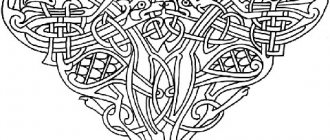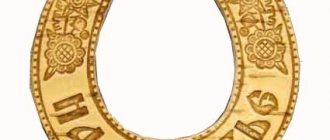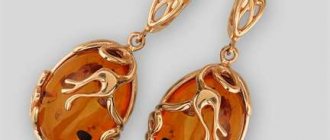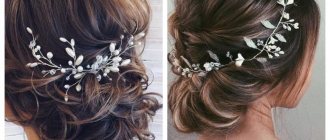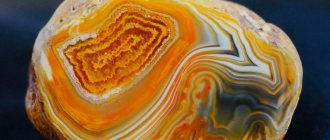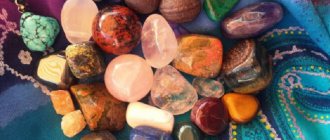History of jewelry in Greece
The ancient Greeks are famous for their refined taste and love of beauty. Greek style jewelry is a combination of simplicity and perfection. Each of them, found during archaeological excavations, surprises with its beauty. Today they can be admired in many museums around the world.
At the same time, unjustified luxury was condemned in those days.
The ancient Greeks believed that everything should be sober and elegant at the same time.
Regardless of a person's social status and status, these rules were strictly observed.
special attention to head decorations. For this, not only natural flower and plant wreaths were used, but also all kinds of hoops with ornaments or pearls. On special occasions, on holidays or when going out, women used tiaras for their hair, inlaid with precious, mostly transparent, stones (for example, rock crystal).
Products created by jewelers of ancient Greece still delight today. At the same time, thanks to an amazing sense of harmony, they do not look too flashy and look restrained.
Ancient Greece. Hairstyles, jewelry, cosmetics
Fashion of Ancient Greece
Greek civilization left us quite a lot of documentary evidence in the form of sculptures, bas-reliefs and paintings, thanks to which we can quite well imagine the appearance of its inhabitants.
For example, it is known for sure that the work of a hairdresser in Greece was a unique form of art - the Greeks loved precision and harmony, and for non-compliance with proportions or a bad haircut, the would-be master faced very serious punishment. Although, of course, such excesses were quite rare - the Greeks were very scrupulous about their appearance and therefore trusted only well-trained servants or slaves with such an important operation as a haircut. Such slaves, by the way, were called “calamisters” and they were valued much more than others. This name comes from the word “kalamis” - this is what the ancient Greeks called the simplest rods for curling hair.
Ancient Greek masters, possessing great taste and a sense of harmony, always created their hairstyles taking into account age, facial features and figure.
Hairstyles
By nature, the Greeks had straight and thick black hair. At the same time, golden-haired beauties were often glorified in works of literature and drama. Perhaps women changed their natural hair color by using alkaline compounds. Finely ground rice and flour were also used to lighten hair. On especially special occasions, hairstyles were sprinkled with gold powder. With the development of Greek society, hairstyle began to determine a person's social status.
In the archaic period, men's hairstyles were distinguished by their simple lines and silhouettes similar to those of women. These were long strands curled into spiral curls, or hair braided and styled in beautiful buns. Often the hair was matched with a ribbon that covered the entire head.
Men's hairstyles were made from long, carefully curled hair that fell over the shoulders and back. The most common hairstyle was braids braided behind the ears. Such braids in a ring, in two rows, wrapped around the head, while on the forehead the hair was arranged in a thick bang of small ring-shaped curls. Another common men's hairstyle was a thick mane of curled hair. The curls were arranged in beautiful vertical rows.
In the 5th - 4th centuries BC, these hairstyles gradually disappeared. Their place was taken by neat little hairstyles of trimmed, coarsely curled curls that clearly outlined the silhouette of the head. Outwardly, they were almost the same, but they used different types of curling - hot and cold.
During the heyday of Athens, men's hairstyles gradually acquired a touch of pretentiousness and delicacy, and a certain femininity appeared in their features. An example of such a complex hairstyle is the hairstyle of Apollo Belvedere by the sculptor Leochares. This is a true work of art: it is made of long curled strands, placed above the forehead in an elegant, light bow. Subsequently, this hairstyle received the name “Apollo bow”, but there is another name - “cicada”, due to the fact that the “bow” resembles the light wings of a cicada. There were many other hairstyles made from curled locks and laid in tight rows.
At all times, in addition to their hairstyle, men wore large beards that framed their lower jaw. Beards were carefully trimmed and curled with tongs, giving them a variety of shapes.
The most common was conical, with the beard hair curled in large spirals or small ring-shaped curls at the very ends. Beards were often soaked in aromatic oils. At feasts, beards were sprinkled with crushed bean flour, chalk, and finely chopped herbs. Citizens who had reached maturity wore a beard.
In Ancient Greece, the ideal of beauty, an example to follow, was considered a person who was perfect in spiritual and physical development, such as the outstanding commander Alexander the Great. He wore a beautiful hairstyle of lightly curled semi-long hair with a typical symmetrical parting - phragis, which later began to be called after him.
It is also noteworthy that Alexander the Great was the first Greek who did not wear a beard. Many men began to imitate him. In the army, warriors were required to shave in order to deprive the enemy of the opportunity to grab his beard. Since that time, the work of barbers has increased. Since the reign of Alexander the Great, beards were no longer worn in Greece - with the exception of philosophers and scientists.
Women's hairstyles have been simple since their inception. Modest and clear outlines prevailed in the hairstyles of all segments of the female population. Hairstyles of the archaic period, with tightly laid strands at the back of the head, became widespread. They were covered with cloth, and sometimes they simply put a bag over the hair.
At first this hairstyle was called the “hetaera hairstyle” - but over time it became more complicated and began to be made from curled hair using a frame. The beam had a cone-shaped shape. The hairstyle became the most common, had many variations, and was called the “Greek knot,” and later, when the knot was attached lower on the neck, it was called karimbos.
The “Greek knot” was considered a classic form of hair decoration in Ancient Greece, but time and tastes made some changes to it: the types of curls were different, the knot was sometimes raised above the neck, sometimes lowered. The “lampadion” hairstyle appeared, resembling the shape of tongues of flame.
In women's hairstyles, as well as in men's, concealing the natural line of the forehead was considered obligatory. Therefore, the hair always covers the forehead low. Like men, women wore hairstyles of the “Apollo bow” type; it was in no way different from men’s in its elegance and execution.
The original, “melon-shaped” hairstyle was brought into fashion in the middle of the 5th century BC by the second wife of Pericles, Aspasia. The hairstyle was made of curled hair, which was laid in large, voluminous vertical sections from the forehead to the back of the head, and tied with two ribbons.
Hetaera Phryne wore a high hairstyle - made of curled hair, with a bow on the crown of her head. The beautiful Phryne posed for famous artists and sculptors. Praxiteles even created a sculptural portrait of Phryne from white marble.
At the beginning of the 5th century BC, a hairstyle of semi-long curled hair was common among young women. They cut the bangs that went down to the middle of the forehead. This hairstyle was complemented by a thin metal fillet hoop; it not only decorated the hairstyle, but also held the hair together and supported the curled strands on the crown. The hair was also tied with a gold-plated leather strap.
Young girls wore their hair loose. But if in the archaic period loose hair was considered a sign of femininity and youth, then in later times only priestesses were allowed to wear loose, untidy hair. For special occasions and feasts, hairstyles took several hours to do, sprinkled with powder from herbs and seeds, which gave the hair a golden hue.
At the end of the 4th and 1st centuries BC, the wearing of wigs spread in Greece. The great need for wigs forced the rulers to create special workshops for their production on the small island of Lesvos. Finely and carefully crafted products of ancient masters of hairdressing quickly became the subject of sale in the markets not only of Ancient Greece, but also of many other countries.
The cost of wigs was so high that they were bought only by rich citizens. Wealthy people were expected to have several wigs for different occasions. Wigs differed not only in color, but also in time of day and year. The most popular were blond wigs made from natural women's hair, followed by wigs with an ashy tint.
Hats
Greek headdresses, as well as hairstyles, were simple and the same for both men and women. Having naturally thick hair, free Greeks rarely wore hats.
However, when going to long-term theatrical performances, long journeys, walks outside the city, or hiking, the Greeks put on caps and hats of different colors, made of felt, felt, and different types of leather.
A hemisphere-shaped kühne hat was common. Worn a cone-shaped felt pileus
, Phrygian cap,
causia
.
Kausiya had a round shape and was made from materials of different colors - often one could determine the profession by the colors. In addition to those listed, they also wore petas and pilos, but these headdresses were worn only by people of the lower class. They were made from straw, rough felt and leather. Soldiers on campaigns wore helmets of various shapes with crests and tails. The tails were made from the hair of horses, yaks or sheep.
In addition, the heads were decorated with wreaths. They were awarded to winners of sports competitions, outstanding speakers and actors, generals and eminent, honorary citizens. They were a mandatory headdress at feasts, processions, and festivals. Wreaths were made from flowers, branches, and leaves. The artistic interweaving was supposed to highlight the most beautiful flower, which was supposed to be in the center. Many wore wreaths of fragrant herbs, branches of ivy, myrtle, roses and oak leaves, as well as branches of poplar, pine, olive, and laurel. Often, plants in wreaths denoted rank, merit, and testified to their position in society.
When leaving the house, women covered their heads with the edge of their cloak. In the heat they wore straw hats - doli, patterned bags, covers, woven scarves. On special occasions, the hairstyle was covered with a veil, which covered not only the hairstyle, but also part of the face.
Decorations
The Greeks had a very peculiar attitude towards decoration and refinement. On the one hand, they were very fond of elegantly made jewelry, on the other hand, society condemned the excessive abuse of jewelry and demanded a sense of proportion. It was not customary to dress richly every day, so gold and silver jewelry was worn only at feasts or theatrical performances. However, over time, jewelry became an object of ostentation, decoration, and a demonstration of wealth. Luxury took on unprecedented proportions; no prohibitions or laws could reason with fashionistas who wore several rings on each finger.
In the decoration of jewelry - rings, earrings, agraphs, rings, hairpins, pins, clasps - ornaments with a floral motif predominated. The masters skillfully conveyed the subtlety of flower petals and blossoming buds. They loved to cut out tiny birds, butterflies, cicadas, and beetles.
Head decorations include hoops woven from gold and silver threads, hair nets, all kinds of ribbons, as well as sfendons or stephans - elegant sickle-shaped decorations made of precious metals. They not only decorated elegant hairstyles, but also served as support for them. The Spartans, who were stricter in their way of life, avoided wearing jewelry for the longest time, and if they did, it was only made of simple metals.
Cosmetics
With the emergence of special baths and body care salons, Greek society began to show increased interest in cosmetics. Men and women used the services of special slaves - cosmetologists, who performed various cosmetic procedures. Special rooms were built in which cosmetologists performed massages and rubbed clients’ bodies with oils and aromatic infusions. Cosmetics were stored in special jugs and vessels. Particular importance was attached to paints. There were special powders for lining eyebrows and eyes. At one time, the use of cosmetics crossed all boundaries.
In view of this, the ruler of the city of Athens introduced a number of restrictions on the use of cosmetics. But they adhered to them weakly, despite the ridicule by poets and playwrights of Greek women who abused cosmetics. During the time of Pericles, his friend and later wife, the famous hetaera Aspasia, wrote a voluminous treatise on the use of cosmetics.
Greek women loved to use aromatic substances, and they resorted to little tricks: they hid tiny cone-shaped bags filled with fragrant essences from jasmine extract and goat fat in their hair. During hours-long performances in theaters, the essence flowed down in drops, and the smell of jasmine spread.
The outstanding physician of Ancient Greece, Hippocrates, who is rightfully considered one of the founders of ancient medicine, paid great attention to cosmetics in his works. He compiled recipes and ointments with which women tried to rejuvenate their faces, smooth out wrinkles, and give them a fresher look. His student Diocles prescribed ointments to whiten or soften the skin. Later, Crito in his work recommended products for hair care, hair coloring, and facial skin care.
source – hairstyle history (?)
Characteristics of antique style jewelry
Greek jewelry stands out among the wide variety of jewelry. They, despite some massiveness and luxury, harmoniously combine simplicity and elegance.
Among the features that characterize them are:
- Massiveness. The main feature inherent in antique fashion. This is especially true for Greek bracelets, which are designed to emphasize the elegance of the wrist.
- Material. Mostly gold or silver was used for them. Also, for example, Greek silver jewelry was complemented with pearls.
- Ornamentation. A characteristic feature of the ornaments is strict and clear lines. Jewelers also used plant patterns (honeysuckle flowers, olive tree leaves, ivy). The use of meanders has also become widespread. It could be square or round.
Antique Greek jewelry
Women of ancient Greece loved to decorate their hair - hairpins and nets decorated with stones, various tiaras and tiaras made of golden laurel branches were always in fashion.
Necklaces and pendants in the form of silhouettes of amphorae and animals were also popular. Earrings were usually made from two parts: a disk with a fine pattern and inlay, to which pendants were attached. As they walked, they swayed and rang, thus warning of a woman’s appearance.
Greek women emphasized the beauty of their hands with bracelets, putting them not only on their wrists, but also on their forearms. Some ladies also wore bracelets on their ankles. The bracelets were strands of pearls or wire weaves with images of animals and mythical creatures. In other words, the jewelry of Ancient Greece was created by wonderful craftsmen.
Etruscan style
Period: 9th-2nd century BC.
Main features:
- patterns in the form of zigzags, triangles, swastikas. Later, more complex sacred emblems appeared: solar disk, crescent, amphora, mascaron.
- techniques: filigree, engraving, glyptics, granulation (graining), embossing. Granulation in concentric patterns is common.
- Carnelian is the most common
The Etruscans are an ancient civilization of the Apennine Peninsula. The art of large cities reflected the culture of the Middle East, the Syrian and Phoenician coastal regions, Mesopotamia and Asia Minor. This was facilitated by direct commercial contacts with the eastern Mediterranean.
Civilization reached its peak from the 7th to the 5th century BC. The best Etruscan jewelry was created at this time. Masters have most succeeded in the granulation technique. Scientists have still not been able to uncover the secret of their skillful decorations. Jewelers knew how to decorate the surface with thousands of tiny gold granules without solder and without disturbing the shape.
In the 19th century, after archaeological excavations, this style significantly influenced European jewelry art. Many jewelers styled their jewelry in the Etruscan style and tried to recreate the complex granulation technique. Jewelry of this direction is sometimes called “archaeological style” or “Etruscan style” (in English it sounds more correct: Etruscan Revival). The jewelry house of Fortunato Pio Castellani played an important role.
There is pomp, quality and variety in Etruscan jewelry. Gold was an expensive metal for Etruria. It was used very carefully and in delicate—in the literal sense of the word—work. The gold leaf was about 0.1 mm thick. Gold plating was often used for bronze items. Despite this, the nobility were buried in luxurious jewelry. It is possible that the deceased may not have even worn posthumous jewelry or did not allow himself to do so before his death.
The Etruscans loved color, so earthenware, colored gemstones and glass beads often decorate their work. During the same period, lotus flowers, pomegranates, palm trees, and acorns appeared among the decorative elements.
The political and economic position of the Etruscans worsened after the 3rd century BC. The Celts attacked from the north, and the Italians from the south. This was reflected in the decorations. They were limited to small, fragile gold items with simple embossing. Filigree and granulation began to be used less frequently.
Characteristic decorations for the Etruscans : bulla, brooch, wreath, necklace, pectoral
Period: 2240-9th century BC Egyptian style
Main features of ancient Egyptian jewelry
- sacred symbols: scarab, ankh, eye of Horus (wadjet or eye of Ra), tiet (Isis knot), sun with wings, feather of Maat; image of the gods Ra, Horus, Isis, Bastet
- floral ornaments; products made of metals, bones or ceramics could take the form of animals (birds, snakes, frogs, dragonflies, giraffes, horses)
- stones: jade, turquoise, jasper, carnelian, amethyst, garnet, lapis lazuli (especially highly valued)
- techniques: smalt and enamel.
With the exception of slaves, all ancient Egyptians wore jewelry. Even children under six years old did not yet wear clothes, but already had their own jewelry. There were three main reasons for this:
- Jewelry reflected wealth. The Egyptians wore simple and light clothing due to the hot climate. She did not demonstrate status, and this task fell on the jewelry.
- Legal authentication. Each person wore a ring with the family emblem and a detailed engraving on the seal. The emblems usually depicted animals: a griffin, a hawk, a lion, a scorpion, etc.
- The decorations were amulets and amulets. Color, materials and symbolism gave meaning to any product.
For example, the scarab embodied rebirth. Therefore, it was important that one or more scarabs adorn the deceased for successful reincarnation. The owner's name was written on the stone so that the spirit knew about its ownership.
The dead were buried with personal and family jewelry. This ensured a good afterlife according to the beliefs of the Egyptians.
People from poor classes decorated themselves with items made of bone, glass, and stones. This prompted jewelers to improve their ability to imitate precious materials. The fake pearls, emeralds and tiger's eyes were almost indistinguishable from the real thing. Gold and copper are the main metals for jewelry in Ancient Egypt. There were no silver mines nearby, so silver was little unknown. Craftsmen combined alloys with gold and created other colors - pink, gray and red-brown.
The art of Ancient Egypt significantly influenced the art of Europe in the 19th and 20th centuries. The first wave of Egyptomania began in the 1860s, when French archaeologist Auguste Mariette received a monopoly on excavations. He made many discoveries and brought various artifacts to France, which were exhibited in the Louvre. Jewelers of that time rethought the motifs of scarabs and snakes, adapting them to contemporary fashion. The second wave of fascination with Egyptian civilization began after the discovery of Tutankhamun's tomb in 1922. This influenced cinema (the film Cleopatra was released in 1934), fashion and, of course, jewelry. Egyptian clear forms especially appealed to the then dominant Art Deco style. Scarabs of the early 20th century received large, sweeping wings with bright enamel, surrounded by snakes. They were made in gold, silver, and jewelry.
Typical Egyptian jewelry: collars, belts, pectorals, rings, brooches, leggings, bracelets, shebyu necklaces, wig decor.
Period: 395-1453 Byzantine style
Main features:
- massiveness, splendor, mixing of materials and techniques; detailed color images
- ancient, later Christian subjects
- geometric ornament: spirals, palmettes, swastikas, meanders are built on the basis of a combination of a cross, square and circle; elements are filled with Christian symbolism;
- mythological motifs: Tree of Life, lily, laurel wreath, griffin, dove, fish, peahens, Phoenix and Sirin birds, double-headed eagle;
- image of the faces of saints, animals, plants
- techniques: filigree, bone and precious stone carving, casting, embossing, blackening, inlay with enamel, pearls, precious stones;
The art of Byzantium adopted ancient features and came under the influence of Mesopotamia and Egypt. But with the adoption of Christianity by the country, it acquired its own style.
The rise of the Byzantine Empire in 527-565. returned it to the status of the most powerful Mediterranean state. Constantinople was for a long time the largest and richest city, a center of trade and culture. The amount of jewelry was so great that special boxes, often made of carved ivory, began to be created to store them. Stylistically, they repeated fragments of the capital's architecture.
Clothes and accessories turn into jewelry: a long closed cape with embroidery, massive headdresses. The earrings are so enlarged that they are attached to the tiara like pendants over the ears.
Characteristic jewelry of the period: cameos and cabochons as separate jewelry (brooches, rings), and formed part of the decor of clothing; crosses (not only symbols of the Christian faith, but also objects of jewelry), brooches with pearls, stones and gold enamel; massive mantle necklaces (as a separate decoration as part of clothing); open type crowns.
